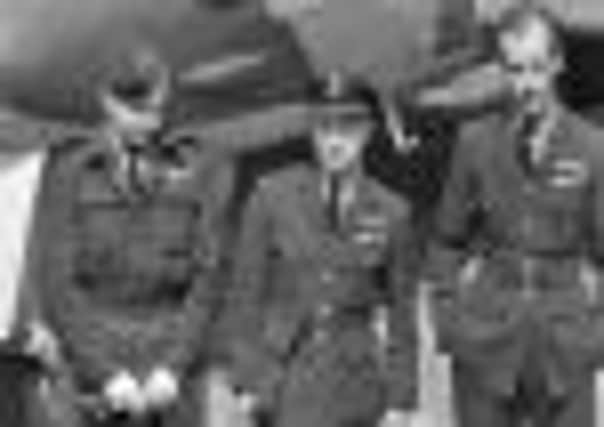Down Memory Lane: The day Tangmere saw the fastest plane in the world


In July 1946, the RAF High Speed Flight was reformed and based at RAF Tangmere to make a new attempt.
The flight was led by Group Captain EM (‘Teddy’) Donaldson who announced his intention ‘to raise the record to 621 mph at least’.
Advertisement
Hide AdAdvertisement
Hide AdTwo other pilots were posted to the flight; Squadron Leader WA Waterton from the Central Fighter Establishment and Flight Lieutenant Neville Duke who was halfway through his test pilot’s course at the Empire Test Pilots’ School, Cranfield.


Based at Tangmere, it was decided the attempt should be made over a 3km course off the Sussex coast at Rustington, near Littlehampton.
No 29 Squadron
The procedures were laid down by the Fédération Aéronautique Internationale (FAI) and to ensure the strict rules were complied with, Tangmere’s No 29 Squadron provided Mosquito aircraft with observers to monitor the aircraft’s flight on the measured 3km course.
Timing cameras were placed at either end of the course and on either side; balloons were flown to provide guidance to the pilot of his altitude.


Advertisement
Hide AdAdvertisement
Hide AdThe flight was provided with standard line-production Gloster Meteor F4s with cleaned-up fuselages and uprated Derwent engines delivering 4,300 lb of thrust (about 30 per cent above normal).
Flight Lieutenant Duke maintained a diary during his time with the flight. His first day’s flying did not go without mishap when on July 2 he recorded: “Towards the end of the final run at 550 knots indicated airspeed at 200 feet, the starboard engine cut dead.
“A violent swing to starboard occurred but was corrected quickly by throttling back the port engine and heavy use of the rudder. The dead engine showed no signs of picking up and a single engine landing was made back at Tangmere.”
High speed
By the middle of August, the High Speed Flight was worked up and ready for the record attempt but warm weather was required to achieve the best speed.
Advertisement
Hide AdAdvertisement
Hide AdOn August 13 and 19, full timed practice runs were carried out but then unfortunately poor weather conditions set in.
On August 24, Neville Duke recorded in his diary: “Attempted a few runs over the course, chiefly to inspire the public who had been on the beaches to see a record run all day – sea fog right down on the coast making it quite impossible!”
So unpromising was the weather forecast at the end of August that Neville Duke was dispatched to Prague to demonstrate the Meteor to the Czechs.
The Czechs wined and dined him and bestowed upon him their Military Cross.
Advertisement
Hide AdAdvertisement
Hide AdEventually on Saturday, September 7, 1946, a break in the poor weather finally arrived and at 17:45 hours Donaldson took off from Tangmere in Meteor EE 549 to attempt the record.
He landed back 14 minutes later having returned an average speed of 615.78 mph over the course – he was the new world airspeed record holder.
Since 1992, EE549, Donaldson’s record-breaking Gloster Meteor has been displayed at the Tangmere Military Aviation Museum courtesy of the Board of Trustees of the RAF Museum.
Get in touch
This article is the 12th in a series of monthly articles on the history of RAF Tangmere.
Advertisement
Hide AdAdvertisement
Hide AdMore information on the museum, including opening times and entry prices can be found on the website: www.tangmere-museum.org.uk.
Have you got a photograph or memory you would like to see featured on the Down Memory Lane page?
You can get in touch by emailing [email protected] or writing to The Observer, Unicorn House, 8 Eastgate Square, Chichester, PO19 1JN.